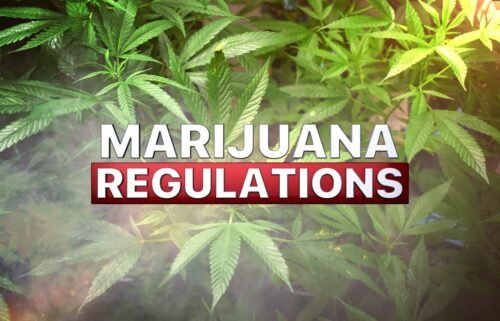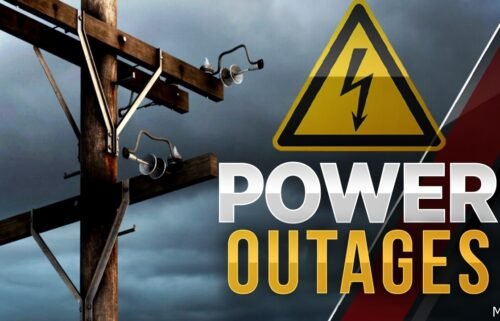Children sleeping on mats in overcrowded plastic pods: Inside a Texas facility on the U.S.-Mexico border
DONNA, Texas — Children lying side by side in plastic-lined pods. Shelves stocked with supplies, including baby bottles and diapers. Girls huddled together in a playpen – where they’ll also sleep at night – singing and coloring with crayons.
The challenge facing the Biden administration at the U.S.-Mexico border can be boiled down to a string of photos.
On Tuesday, the administration allowed a few members of the media to tour a temporary Customs and Border Protection facility in Donna, Texas. The facility is well over capacity, with more than 4,100 migrants at the facility despite a pandemic capacity of 250, acting Executive Officer for Rio Grande Valley Operational Programs Division Oscar Escamilla told reporters.
Of the 4,100 total, 3,400 were unaccompanied migrant children and at least 39 have been in the Donna facility for more than 15 days, exceeding the 72-hour legal limit. There were 5,767 children in CBP custody overall as of Sunday.
Until the children are transferred to shelters equipped to care for them, they wait in Donna, which is filled with artificial light and the humming noise of machines and people. Inside one of the large plastic pods that separates groups of children, a young girl cried, surrounded by other children on floor mats, covered in foil blankets.
“When the kids are apprehended out in the field, the first place they’re going to come is this facility. All of the unaccompanied children throughout [Rio Grande Valley] come to this facility right here,” Escamilla said.
“We’re way overcapacity. We’re like 700% overcapacity,” he later added.
In early February, CBP announced the opening of a soft-sided facility in Donna to process individuals. The facility is different from typical Border Patrol stations and provides areas for eating and sleeping, according to the agency.
But the growing number of migrant arrivals has overwhelmed the administration’s resources, resulting in crowded conditions and children spending prolonged periods in Border Patrol custody.
More than 2,000 migrants at the Donna facility have been here for over the legal limit of 72 hours. Migrants spend an average of 133 hours at the Donna facility.
New footage of plastic pods
Footage shot Tuesday provided a glimpse of the overcrowded conditions in border facilities and the sheer number of children who have arrived at the border.
Video released by journalists showed an intake area, where children, wearing face masks, sat next to each other on benches inside a large tented sally port with a portable toilet. The children have their temperatures taken before entering the facilities and then are checked by medical staff. Agents also take biometrics, run records checks and enter information for families and children. All children over the age of 14 have their fingerprints taken.
While at the facility, migrants can phone home every 48 hours.
Young children spent time in a play time pen, where they also sleep at night, according to a pool reporter who described a purple and pink pen surrounding a group of about 27 kids on an alphabet rug. The kids in that room typically range from three to nine years old.
There are also a series of see-through plastic pods lined up where children sleep, each 3,200 square feet. Under CDC guidelines, each should only hold 32 kids. In the three pods, the pool reporter walked through there were 516, 576 and 615 kids per pod.
In one pod, visited by the pool, kids stood shoulder to shoulder waiting for a snack allocation of a Capri Sun and Goldfish crackers. Within each pod, children sleep, sit, stand back to back.
‘We can’t turn them over to anybody’
Typically, after being taken into Border Patrol custody, unaccompanied children have to be turned over within 72 hours to the Department of Health and Human Services, which is tasked with the care of migrant children, barring exceptional circumstances.
Once in care, case managers will work to place children with a sponsor, like a parent or relative, in the US, but as a result of the coronavirus pandemic, and precautions to avoid spread of Covid-19, the department had until recently only been able to use a little more than half of the beds it has for children.
Over recent days, HHS announced a string of new facilities, leaning on convention centers, military sites and influx shelters to accommodate children.
“While [the Office of Refugee Resettlement] has worked to build up its licensed bed capacity to almost 13,500 beds, additional capacity is urgently needed to manage both enhanced Covid-19 mitigation strategies and the increasing numbers of [unaccompanied children] referrals from DHS,” said Ken Wolfe, HHS spokesperson, in a statement.
But even as those beds come online, more children are being encountered daily along the border.
“What bogs us down is the fact that we’re having to take care of 1,200 kids. We’re already done. We already completed the Border Patrol process, so if HHS would be able to take these kids off of our hands then it would be better for everybody,” Escamilla said. “We’re not in the business of dentition. We’re forced into the business because we can’t turn them over to anybody.”



